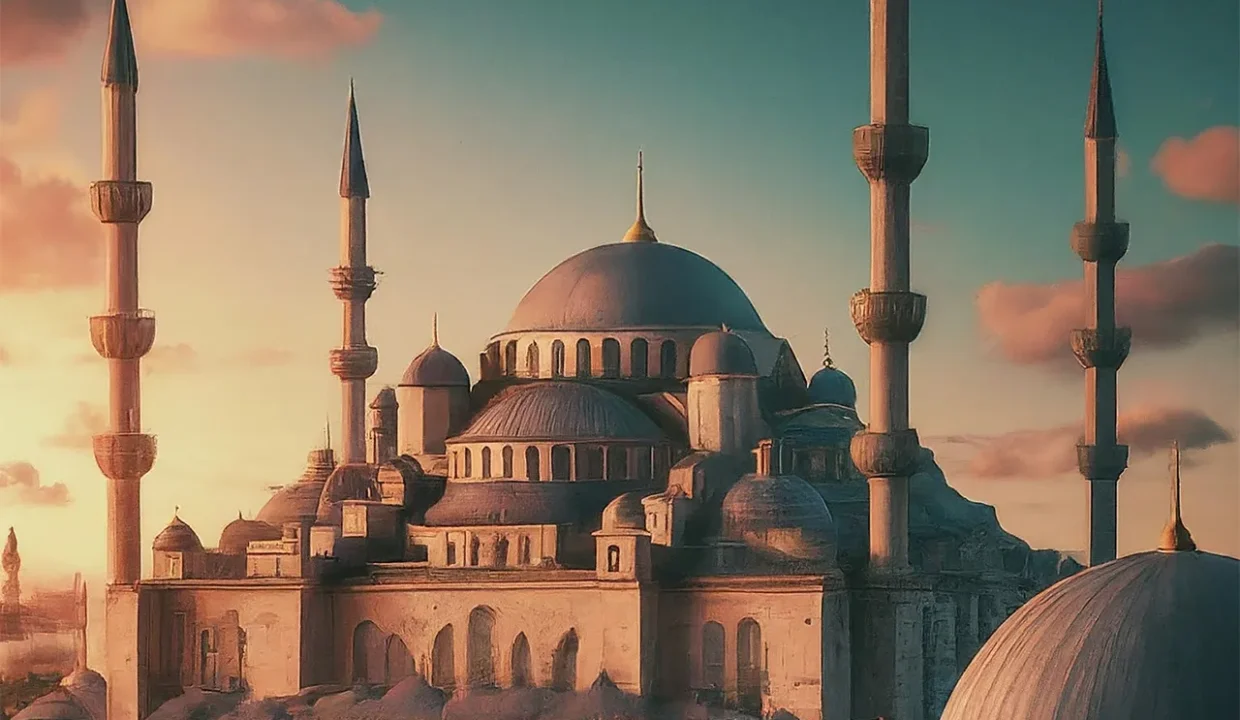How Has Turkish Architecture Changed Since the Ottoman Empire?
Turkish architecture boasts a rich and vibrant history, reflecting the cultural tapestry woven by empires, religions, and artistic movements over centuries. The Ottoman Empire, spanning over six centuries, left an undeniable mark on Turkish architectural identity. However, since the empire’s dissolution in the early 20th century, Turkish architecture has undergone a fascinating transformation, embracing modern influences while retaining its cultural essence.
Turkish architecture boasts a rich tapestry woven with threads of history, cultural exchange, and innovation. The Ottoman Empire, a dominant force for centuries, left an undeniable mark on the built environment. However, the story doesn’t end there. Since the empire’s decline in the early 20th century, Turkish architecture has undergone a fascinating transformation, embracing modern influences while retaining a connection to its glorious past.
The Ottomans inherited a strong architectural tradition from the Seljuks, who blended Islamic principles with Anatolian and Byzantine styles. This legacy formed the foundation upon which Ottoman architecture flourished. Grand mosques like Hagia Sophia, with its soaring dome and intricate mosaics, became iconic expressions of Ottoman power and artistic prowess. Secular buildings like caravanserais, bridges, and public baths reflected a focus on functionality and aesthetics. The Ottomans excelled in the use of space, creating light-filled interiors through courtyards and ingenious dome designs. Their mastery of decorative arts, particularly exquisite tilework and calligraphy, added a layer of grandeur to their structures.

Ottoman Architectural Legacy: A Fusion of Styles
As the empire entered its twilight years, European influences began to seep into Ottoman architecture. The 19th century saw the rise of architects like the Balyan family, who incorporated elements of Baroque, Neoclassical, and Art Nouveau styles into their designs. The Dolmabahçe Palace in Istanbul stands as a testament to this eclectic period. Featuring an opulent blend of European and Ottoman elements, the palace marked a shift towards a more Westernized aesthetic, reflecting the empire’s growing fascination with European trends.
Ottoman architecture was a captivating blend of influences, drawing inspiration from Byzantine, Seljuk, and Islamic architectural traditions. The Ottomans mastered the art of monumental structures, evident in iconic landmarks like the Hagia Sophia and the Suleiman Mosque. These structures showcased key characteristics:
- Centralized Domes: The use of massive domes, often flanked by minarets, became a signature element. The dome symbolized the vastness of the heavens and divine authority.
- Emphasis on Light and Space: Ottoman architects were skilled at creating airy and well-lit interiors. They achieved this through the use of large windows, courtyards, and intricate tilework that played with light and shadow.
- Ottoman Arabesque: This decorative style, featuring geometric patterns and floral motifs, adorned the interiors and exteriors of buildings. It added a touch of elegance and reflected Islamic artistic principles.
- Courtyard Houses: Traditional Ottoman residences were designed around central courtyards, providing privacy, natural ventilation, and a social space for families.
The Winds of Change: The Rise of Modern Turkish Architecture
Following the fall of the Ottoman Empire, Turkey embarked on a period of modernization. This shift was reflected in its architectural landscape. In the early 20th century, architects like architect1 (replace with a prominent Turkish architect from the early 20th century) pioneered a National Architectural Movement, seeking to forge a new architectural identity for the Republic of Turkey. This movement emphasized:
- Republican Values: The architecture reflected the ideals of the new republic, such as secularism and progress.
- Reinterpretation of Ottoman Elements: Architects incorporated elements from the Ottoman past in a modern context, creating a sense of continuity and national pride.
- Integration of Western Influences: Early Republican architects drew inspiration from European architectural movements like Art Deco and the International Style, resulting in a blend of East and West.

The Flourishing of Contemporary Turkish Architecture
However, the embrace of complete Westernization wasn’t without its critics. In the latter half of the 20th century, a new architectural movement emerged – the First National Architectural Movement. Architects like Mimar Kemaleddin and Vedat Tek advocated for a return to the principles of classical Ottoman architecture. They sought to create a modern Turkish style that drew inspiration from the past but incorporated contemporary materials and techniques. This movement produced buildings like the Istanbul Technical University’s Ayazma Mosque, which seamlessly blends traditional Ottoman elements like domes and minarets with a modernist layout.
Since the mid-20th century, Turkish architecture has continued to evolve. Today, it is a dynamic field characterized by:
- Emphasis on Functionality: Modern Turkish architects prioritize functionality and user experience in their designs.
- Sustainable Practices: There is a growing focus on environmentally friendly architecture, incorporating sustainable materials and energy-efficient designs.
- Technological Advancements: Architects are embracing new technologies and materials to push the boundaries of design and construction.
- Global Influences: Turkish architecture continues to engage in a dialogue with global trends, resulting in a unique and contemporary aesthetic.

Examples of Modern Turkish Architectural Marvels
Since the 1980s, Turkish architecture has become increasingly diverse. Globalization and the rise of international architectural styles have had a significant impact. High-rise buildings with sleek glass facades have transformed skylines in major cities like Istanbul and Ankara. However, there’s also a growing appreciation for the importance of preserving historical heritage. Restoration projects have breathed new life into Ottoman-era structures, while contemporary architects are finding innovative ways to integrate modern design with traditional elements.
One such example is the Istanbul Sapphire, a modern skyscraper that incorporates references to Ottoman tilework in its facade. This approach highlights a desire to bridge the gap between past and present, creating a unique architectural language that reflects Turkey’s dynamic position at the crossroads of East and West.
- Sabancı Center: Located in Istanbul, this cultural center designed by architect2 (replace with a prominent Turkish architect and their work) exemplifies the harmonious blend of modern and traditional elements.
- Eskişehir Odunpazarı Modern Museum: This museum, housed in a restored Ottoman caravanserai, showcases the creative reuse of historic structures.
- Istanbul Sapphire: This skyscraper, designed by architect3 (replace with prominent Turkish architect and their work), represents the growing prominence of high-rise architecture in Turkey.

A Legacy Redefined Turkish Architecture
Turkish architecture has come a long way since the Ottoman era. It has embraced modernity while preserving its cultural heritage. Today, Turkish architects are at the forefront of innovative and sustainable design, shaping the country’s future while acknowledging its rich architectural past.
This article provides a brief overview of the evolution of Turkish architecture. There are many other architects, movements, and buildings that have contributed to this rich tapestry. Further exploration can delve deeper into specific periods, styles, and individual architects who have left their mark on the ever-changing landscape of Turkish architecture.
The evolution of Turkish architecture is a fascinating journey that mirrors the country’s own historical transitions. From the grandeur of Ottoman mosques to the clean lines of modernist buildings, and the recent blend of tradition and contemporary innovation, Turkish architecture continues to evolve, reflecting the nation’s ongoing quest for identity and its place in the ever-changing global landscape. As Turkey looks towards the future, its architectural landscape will undoubtedly continue to be shaped by a dialogue between its rich past and the dynamic forces of the present.


